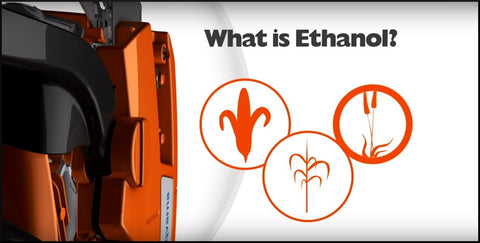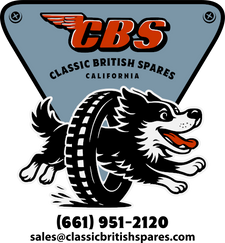
Beware: Ethanol Fuel Damaging Carburetors

Hello C.B.S. readers and enthusiasts. Today I will be discussing a topic and also sharing a story in which has to do with ethanol fuel and why it is so damaging to your carburetors. I was prompted to write this post based off of my recent personal experience. I would like to encourage everyone to read this post - It could save you a lot of time and money. Without any further delay let's get to it!
What is ethanol fuel?

According to Wikipedia "Ethanol fuel is an "eco-freindly" alternative to gasoline. It is composed from ethyl alcohol - the same type of alcohol typically found in alcohol beverages but used as fuel. It is most often used as a motor fuel, mainly as a biofuel additive for gasoline."
Here in the United States ethanol fuel is typically called E10. The ethanol content of most of the motor gasoline sold in the United Sates does not exceed 10% by volume
My recent experience
Recently I had most of my hardware re-chromed which included fenders, grab rail, gas tank, brackets, and other miscellaneous parts off of my 1969 BSA A65 Lightning.
The whole process from putting the bike on the lift, removing the hardware, and reinstalling the hardware after having it chromed was about 3 months.
During this time frame I left the fuel in the carburetors - big mistake. Upon starting the bike I noticed that it would only run for about 2 seconds then shut off. How strange.. it ran fine before.. Keep in mind that these carbs have been on my bike (running great) for about a year and a half.
It never dawned on me that the fuel could have gone bad after 3 months. Well this was the case. I removed both carbs and dissemble them for a thorough cleaning. To my surprise the insides where corroded. The inside coating was stripped down to the carburetors dull natural finish.

Float bowl of a carburetor corroded by ethanol fuel
Every component made from brass found its was to the trash. Corroded beyond use and I didn't want to risk it. I replaced all the brass hardware with new Amal parts.
After the carburetor rebuild I installed the carbs, topped the tank off with fresh gas and gave it a kick. The BSA Lightning started right up but it was too soon to be excited. Now I have another issue - carburetor #2 does not "pick-up" or respond until the air screw is literally 5 turns out!
To make the long story short I rebuilt and cleaned carburetor #2 about 5 times with no success. The corrosion was so bad to the point it internally damaged the carburetor. I used picks, carb cleaner, an ultra-sonic cleaner, air gun, and any other trick in the book to get the carbs working again as it should with no success.
I believe there was damage internally which was causing the carburetor to run extremely rich on the pilot circuit. I adjusted the float height and fuel level but that did not solve the problem.
Solution

Here is my 2cents in which I tell my customers to live by and I now follow these rules - if you want to avoid the same problems I endured then I recommend that you pay close attention to the following steps below.
#1 - Do not leave fuel in your gas tank and carburetor for more than 2 months. Drain all fuel from your carb and gas tank to avoid any possible damage.
#2 - Before you start your bike perform a smell test of your gas. If the ethanol smells "stale" or "sour" remove the fuel immediately - do not turn the fuel taps on.
#3 - Use vinegar to help fight rust. Remove fuel from tank and fill the entire tank with vinegar. This will help fight rust over long periods in storage.
#4 - Use an ethanol fuel stabilizer to prevent fuel separation. When ethanol fuel becomes "stale" it attracts water which causes corrosion. An ethanol fuel stabilizer can be found at a local auto-parts store.
Conclusion
For those who live back east where you have long winters, following the steps above is a must. Ethanol fuel can cause some serious destruction to your fuel system not to mention costing you money. If you cannot drain the fuel from your take or carbs you can always purchase a fuel stabilizer formula. As always I hope my experience and time lost will help you. Thanks for reading and feel free to comment in the section below.

Brian
Thank you for this post. Was your final solution to replace the damaged carb(s), or were you able to find any additional rebuild steps to correct the problem?